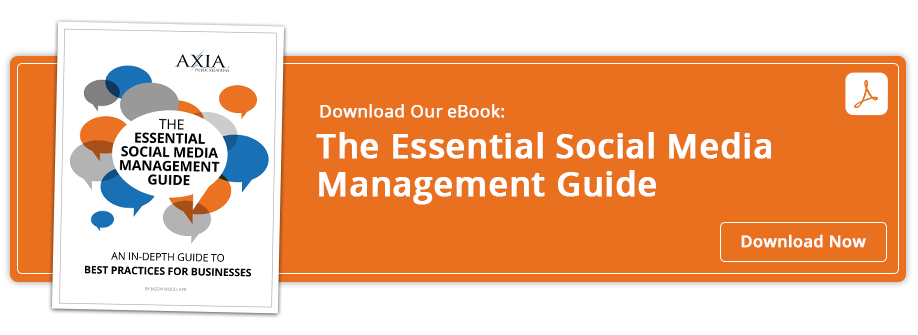 PR lays out three key tips
PR lays out three key tips
Not long ago, we wrote about hashtags and the reasons why the popular trackable communication tactic is quickly becoming a favorite tool in the business realm. To that end, some business owners may not yet know how to effectively use them. Below are a few tips on how to best use hashtags.
1. Create a proper hashtag.
This step sounds simple enough, right? Unfortunately, developing a hashtag can actually prove rather challenging, given the restrictions and the fact that the public commandeers them regularly for fun.
-
Hashtags always begin with a letter, not a number, so avoid tags like #451Grill, for example. Instead, use #Grill451.
-
Remember that they cannot contain any spaces – #nospaces versus #no spaces; the latter will result in a hashtag of simply #no.
-
Hashtags do not support punctuation marks, so commas, exclamation points, question marks, apostrophes, asterisks, ampersands and periods are all out.
-
Don’t worry about upper- or lower-case letters. #Grill451 will net the exact same results as #grill451. Some feel that proper capitalization just looks more professional when used in printed collateral.
-
Know the purpose of your hashtag. Is it to support your brand, be a part of a campaign, establish a trending topic or introduce a new product?
-
Make it memorable and easy to use. Something like #supercalifragilisticexpialidocious probably wouldn’t make a good or long-lasting hashtag.
2. Use your hashtag correctly.
Once you’ve created the perfect hashtag, knowing how, where and when to use it is the next step.
-
Avoid hashtag spam. A big challenge when it comes to leveraging hashtags is using too many of them. Though your main hashtag is critical, more than three additional hashtags is generally considered spammy.
-
Using a hashtag more than once in a single post does not bolster its impact or effect. Once is enough.
-
Be aware of hashtag hijackers. As the term suggests, hashtag hijacking occurs when people use a hashtag a manner other than its intended purpose. This has been a problem most notably for those who have coined hashtags that have come back to negatively impact them.
Paula Deen offers a fairly recent example: She hosted a once wildly popular food television show called Paula’s Best Dishes. After a recent, highly publicized, racially charged social media misstep, #PaulasBestDishes went from a casually used promotional tool to a hijacked hashtag laden with hostile innuendo.
-
Provide context. When using hashtags, establish a dialogue first so that your audiences understand its purpose. Posting “#fitfam” alone – without a photo, video or any accompanying text – will leave most people guessing. However, posting “Tough @CrossFit workout this morning with a dedicated team of health nuts. #fitfam #crossfitny” adds appropriate and helpful context.
-
Hashtags aren’t beneficial or useful across every social media platform. Hashtags first appeared on Twitter, but these days, Facebook and Google+ support hashtags, too, and Instagram and Pinterest leverage them to support their nearly exclusively image-based content. Most don’t use or pay attention to hashtags on professional networking sites such as LinkedIn. The bottom line is to know your platforms, understand how users engage on them and mirror that engagement to maximize your success.
3. Track your hashtags.
Hashtags are searchable and trackable, making them a useful piece of measurement data.
-
Know who is “listening,” or following. The use of hashtags gives brands and businesses a new way to interact with customers, determine trends, market insight and learn what concepts, products or information resonates most with target audiences. Most social media experts explain that social media is most successful under a dual strategy: listening/following and engagement/interaction.
Businesses can learn much from audiences by simply following digital conversations. Are people using your hashtag? How often are they using it? Do they accept, mimic or mock it? Where is your hashtag used most often? Least often? What are the demographics of those successfully engaged? After gaining some basic information, brands can more authentically engage and interact with audiences. Creating one-sided, inauthentic posts generally results in minimal to no success. -
Check and analyze how your hashtag is faring across all virtual platforms. This website will perform a search and compile those results for you: www.tagboard.com
For further insight on the value of hashtags and how to use them, download Axia Public Relations’ Essential Social Media Guide.

 Wendy Bulawa Agudelo has more than 15 years of experience in technology, business, consumer and non-profit public relations. In addition to serving on the Massachusetts Down Syndrome Congress PR Task Force, Wendy enjoys cooking and rooting for her favorite New England sports teams.
Wendy Bulawa Agudelo has more than 15 years of experience in technology, business, consumer and non-profit public relations. In addition to serving on the Massachusetts Down Syndrome Congress PR Task Force, Wendy enjoys cooking and rooting for her favorite New England sports teams.
Featured image credit: 123rf.com
Topics: public relations, inbound marketing, shared media

Comment on This Article